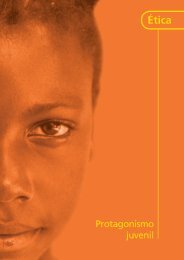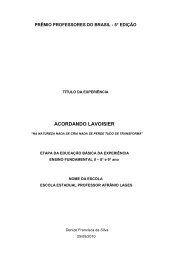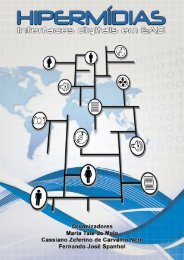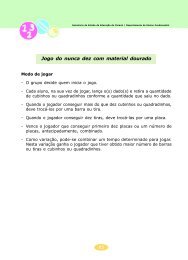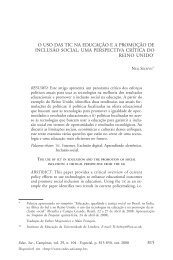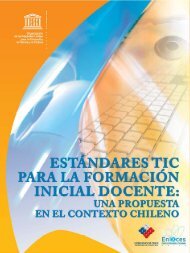Eclipses through the Centuries - Portal do Professor
Eclipses through the Centuries - Portal do Professor
Eclipses through the Centuries - Portal do Professor
Create successful ePaper yourself
Turn your PDF publications into a flip-book with our unique Google optimized e-Paper software.
joyful experience could become a real nightmare. Here you will learn how to<br />
proceed to safely observe a solar eclipse.<br />
Staring at <strong>the</strong> Sun without proper protection can cause irreparable damage to<br />
<strong>the</strong> eye and is not recommendable. The Sun is a source of electromagnetic<br />
radiation: solar X-ray, gamma ray, microwave, radio wave, ultraviolet, and<br />
visible light. 27 When <strong>the</strong> retina is exposed to intense visible light, two kinds<br />
of eye damage can occur, alone or simultaneously - retinal burns and <strong>the</strong>rmal<br />
injury, <strong>the</strong> latter occur without any feeling of pain, but that can cause irreparable<br />
damage to <strong>the</strong> eye or even blindness. 28<br />
So how can we safely observe <strong>the</strong> Sun? There are several safe methods, but<br />
<strong>the</strong> best one is indirect projection (See “Observing <strong>Eclipses</strong> Safely,” at<br />
http://www.mreclipse.com/Totality/TotalityCh11.html). This can be <strong>do</strong>ne by<br />
projecting <strong>the</strong> Sun’s image on a white piece of paper using a pair of binoculars<br />
(with one of <strong>the</strong> lenses covered), or by putting a small hole (about 1 mm in<br />
diameter) in a piece of aluminum foil taped over a paper towel tube, often<br />
called a pinhole camera. It allows safe viewing of <strong>the</strong> Sun’s projected image.<br />
However, care must be taken to ensure that no one looks <strong>through</strong> <strong>the</strong> projector<br />
directly, especially if children and teenagers are present, because this would<br />
cause severe eye damage.<br />
The Sun can be also observed with appropriate filters to block its harmful<br />
radiation. O<strong>the</strong>r improvised methods, such as looking at a reflection on water,<br />
or looking <strong>through</strong> a compact disk, are also dangerous. Only properly designed<br />
and certified solar filters should be used for direct viewing of <strong>the</strong> Sun, and <strong>the</strong>se<br />
must be in perfect condition, as even a small defect could cause irreparable<br />
damage to <strong>the</strong> eye.<br />
Please be aware that standard or polaroid sunglasses are not solar filters.<br />
Although <strong>the</strong>y may afford some eye relief if one is outside on a bright day, you<br />
should never use <strong>the</strong>m to observe <strong>the</strong> Sun. You cannot use sunglasses, even<br />
crossed polaroids, to stare at <strong>the</strong> sun during partial phases of an eclipse. They<br />
provide essentially no eye protection for this purpose. 29<br />
Strictly speaking, it is safe to observe <strong>the</strong> total phase of a solar eclipse when <strong>the</strong><br />
Sun’s photosphere is completely covered by <strong>the</strong> Moon. The Sun’s corona will<br />
be visible, as will be <strong>the</strong> chromosphere, solar prominences, and possibly even<br />
solar flares. Never<strong>the</strong>less, even under <strong>the</strong>se conditions, <strong>the</strong>re is great danger in<br />
16




